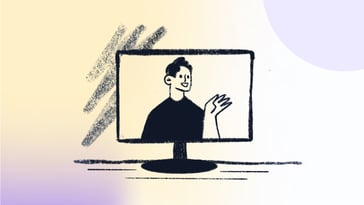There’s an eternal conflict between formal vs. informal communication channels when it comes to managing IT Service Management (ITSM) in organizations. We have all been in the shoes of the customer, and can understand why it might seem easier to call or text an IT agent when we need to request something quickly. But users don’t always know what is happening behind the scenes, and the whole triage process behind what seems like a simple request.
Informal communication channels, such as a personal WhatsApp, can affect workload distribution among agents, making it difficult to track and monitor logged issues, and, what is more, make the agent solely responsible for whatever they accept to solve on their own. To avoid this, adopting formal communication channels and encouraging end-users to use them is crucial for the IT support department to efficiently manage their workload, and at the same time take accountability for the issues that come in.
Here, we will explore how incorporating formal communication channels can benefit your support services, and why adopting a help desk with certain key features such as InvGate Service Management can support you through this transition in your organization.
Keep reading to learn more about it!

What are formal communication channels?
As you can probably guess from the name, formal communication channels are the established methods of communication sanctioned by an organization. They are often outlined in policies or procedures, and typically used for official business, such as transmitting important information, making decisions, or resolving conflicts.
In the context of an IT department, official channels are key to establish a common procedure for the whole organization, and keep all incoming requests organized in one place for the IT team to triage and address accordingly.
The best way to administrate incoming tickets is through a help desk that allows you to provide omnichannel support so that users can either solve issues by themselves thanks to its self-service capabilities, or submit their requests through multiple channels – such as email, phone calls, or a Microsoft Teams bot.
If users create a ticket through any of the organization’s official communication channels, your agents can reply in the same way, in compliance with the established Standard Operating Procedures, and allowing service desk managers to monitor their performance and hold them accountable.
What is informal communication?
On the other hand, informal communication refers to the transmission of requests, information, or opinions through unofficial channels that have not been authorized by a company. Unlike formal communication, it does not follow established protocols or procedures and is often spontaneous and unstructured.
When it comes to ITSM, informal communication channels are usually casual or verbal communication, instant messaging, social media, or any other channel that doesn’t end up in a ticket.
Formal vs. informal communication channels
When it comes to communication, not everything is black or white. There’s no best way to do things, because it all depends on context – meaning the specific situation, the people involved, and what you want to achieve.
Even so, there are some pros and cons of each communication method to consider:
|
Formal communication channels |
Informal communication channels |
|
|
Pros |
|
|
|
Cons |
|
|
How to encourage official communication channel adoption
Usually, customers tend to opt for informal communication channels, either because it is what they're used to, or because they consider their request can be easily solved and is not important enough to create a ticket. The challenge relies on encouraging them to use official channels. So, here are some tips on how to do it:
- Implement an omnichannel support strategy – Allowing employees to submit requests through a variety of channels (including email, chat, and phone) gives customers the option to choose the one they are most comfortable with, and avoids the mandatory use of an unfamiliar tool. To help you with that, InvGate Service Management offers native integrations with Microsoft Teams, an open API, and third-party integrations with Zapier to create an omnichannel support strategy that adapts to your business.
- Prioritize tickets submitted through the Service Desk – By letting customers know that the tickets submitted through InvGate Service Management will be treated with higher priority, you will encourage them to choose official communication channels. And, when the amount of requests that are addressed through the tool increases, the whole support system and ticket routing process will improve.
- Implement Level 0 of IT Support – With the implementation of level 0 of IT support through InvGate Service Management, you will provide employees with a self-service portal for frequent requests to potentially self-solve their issue without the delay of contacting the service desk. This will encourage its adoption for the cases they don't find an accurate answer: if users are already in the system looking for an answer, it's much more likely that they create a ticket to request for help. This way you will not only reduce the workload for IT staff, but also increase the adoption of official communication channels.
- Provide an intuitive UX for end-users – A user-friendly interface that is easy to navigate and understand makes submitting requests through InvGate Service Management a pleasant and convenient experience. This will increase service desk adoption, plus it will encourage and improve communication and collaboration between IT and end-users through the channel.
- Clearly communicate which are the official communication channels – Your goal might be to decrease costs or provide the fastest resolution, but whatever your reason for promoting the channels, let customers know where to find them and how it will be beneficial for them. A great way to do so is to create knowledge base articles to make those channels available.
In conclusion
Establishing official channels is a must if you want to have a well functioning ITSM in your organization. In a few words, it increases transparency, accountability, and trust among team members. So, although it will be practically impossible to eliminate all informal communication, it’s essential to have a healthy balance between them and make sure you are encouraging formal channels as much as possible.
InvGate Service Management can help you streamline formal communication in your organization by standardizing and automating processes in a simple and intuitive way. This will improve communication and collaboration between IT staff and end-users, and help you manage IT issues and requests in an all-round efficient way
Ask for a 30-day free trial and give it a go!















